Shanshan Zhao
Unified Multimodal Understanding and Generation Models: Advances, Challenges, and Opportunities
May 05, 2025Abstract:Recent years have seen remarkable progress in both multimodal understanding models and image generation models. Despite their respective successes, these two domains have evolved independently, leading to distinct architectural paradigms: While autoregressive-based architectures have dominated multimodal understanding, diffusion-based models have become the cornerstone of image generation. Recently, there has been growing interest in developing unified frameworks that integrate these tasks. The emergence of GPT-4o's new capabilities exemplifies this trend, highlighting the potential for unification. However, the architectural differences between the two domains pose significant challenges. To provide a clear overview of current efforts toward unification, we present a comprehensive survey aimed at guiding future research. First, we introduce the foundational concepts and recent advancements in multimodal understanding and text-to-image generation models. Next, we review existing unified models, categorizing them into three main architectural paradigms: diffusion-based, autoregressive-based, and hybrid approaches that fuse autoregressive and diffusion mechanisms. For each category, we analyze the structural designs and innovations introduced by related works. Additionally, we compile datasets and benchmarks tailored for unified models, offering resources for future exploration. Finally, we discuss the key challenges facing this nascent field, including tokenization strategy, cross-modal attention, and data. As this area is still in its early stages, we anticipate rapid advancements and will regularly update this survey. Our goal is to inspire further research and provide a valuable reference for the community. The references associated with this survey will be available on GitHub soon.
JointTuner: Appearance-Motion Adaptive Joint Training for Customized Video Generation
Mar 31, 2025Abstract:Recent text-to-video advancements have enabled coherent video synthesis from prompts and expanded to fine-grained control over appearance and motion. However, existing methods either suffer from concept interference due to feature domain mismatch caused by naive decoupled optimizations or exhibit appearance contamination induced by spatial feature leakage resulting from the entanglement of motion and appearance in reference video reconstructions. In this paper, we propose JointTuner, a novel adaptive joint training framework, to alleviate these issues. Specifically, we develop Adaptive LoRA, which incorporates a context-aware gating mechanism, and integrate the gated LoRA components into the spatial and temporal Transformers within the diffusion model. These components enable simultaneous optimization of appearance and motion, eliminating concept interference. In addition, we introduce the Appearance-independent Temporal Loss, which decouples motion patterns from intrinsic appearance in reference video reconstructions through an appearance-agnostic noise prediction task. The key innovation lies in adding frame-wise offset noise to the ground-truth Gaussian noise, perturbing its distribution, thereby disrupting spatial attributes associated with frames while preserving temporal coherence. Furthermore, we construct a benchmark comprising 90 appearance-motion customized combinations and 10 multi-type automatic metrics across four dimensions, facilitating a more comprehensive evaluation for this customization task. Extensive experiments demonstrate the superior performance of our method compared to current advanced approaches.
UNIC-Adapter: Unified Image-instruction Adapter with Multi-modal Transformer for Image Generation
Dec 25, 2024



Abstract:Recently, text-to-image generation models have achieved remarkable advancements, particularly with diffusion models facilitating high-quality image synthesis from textual descriptions. However, these models often struggle with achieving precise control over pixel-level layouts, object appearances, and global styles when using text prompts alone. To mitigate this issue, previous works introduce conditional images as auxiliary inputs for image generation, enhancing control but typically necessitating specialized models tailored to different types of reference inputs. In this paper, we explore a new approach to unify controllable generation within a single framework. Specifically, we propose the unified image-instruction adapter (UNIC-Adapter) built on the Multi-Modal-Diffusion Transformer architecture, to enable flexible and controllable generation across diverse conditions without the need for multiple specialized models. Our UNIC-Adapter effectively extracts multi-modal instruction information by incorporating both conditional images and task instructions, injecting this information into the image generation process through a cross-attention mechanism enhanced by Rotary Position Embedding. Experimental results across a variety of tasks, including pixel-level spatial control, subject-driven image generation, and style-image-based image synthesis, demonstrate the effectiveness of our UNIC-Adapter in unified controllable image generation.
Non-target Divergence Hypothesis: Toward Understanding Domain Gaps in Cross-Modal Knowledge Distillation
Sep 04, 2024



Abstract:Compared to single-modal knowledge distillation, cross-modal knowledge distillation faces more severe challenges due to domain gaps between modalities. Although various methods have proposed various solutions to overcome these challenges, there is still limited research on how domain gaps affect cross-modal knowledge distillation. This paper provides an in-depth analysis and evaluation of this issue. We first introduce the Non-Target Divergence Hypothesis (NTDH) to reveal the impact of domain gaps on cross-modal knowledge distillation. Our key finding is that domain gaps between modalities lead to distribution differences in non-target classes, and the smaller these differences, the better the performance of cross-modal knowledge distillation. Subsequently, based on Vapnik-Chervonenkis (VC) theory, we derive the upper and lower bounds of the approximation error for cross-modal knowledge distillation, thereby theoretically validating the NTDH. Finally, experiments on five cross-modal datasets further confirm the validity, generalisability, and applicability of the NTDH.
Towards Modality-agnostic Label-efficient Segmentation with Entropy-Regularized Distribution Alignment
Aug 29, 2024



Abstract:Label-efficient segmentation aims to perform effective segmentation on input data using only sparse and limited ground-truth labels for training. This topic is widely studied in 3D point cloud segmentation due to the difficulty of annotating point clouds densely, while it is also essential for cost-effective segmentation on 2D images. Until recently, pseudo-labels have been widely employed to facilitate training with limited ground-truth labels, and promising progress has been witnessed in both the 2D and 3D segmentation. However, existing pseudo-labeling approaches could suffer heavily from the noises and variations in unlabelled data, which would result in significant discrepancies between generated pseudo-labels and current model predictions during training. We analyze that this can further confuse and affect the model learning process, which shows to be a shared problem in label-efficient learning across both 2D and 3D modalities. To address this issue, we propose a novel learning strategy to regularize the pseudo-labels generated for training, thus effectively narrowing the gaps between pseudo-labels and model predictions. More specifically, our method introduces an Entropy Regularization loss and a Distribution Alignment loss for label-efficient learning, resulting in an ERDA learning strategy. Interestingly, by using KL distance to formulate the distribution alignment loss, ERDA reduces to a deceptively simple cross-entropy-based loss which optimizes both the pseudo-label generation module and the segmentation model simultaneously. In addition, we innovate in the pseudo-label generation to make our ERDA consistently effective across both 2D and 3D data modalities for segmentation. Enjoying simplicity and more modality-agnostic pseudo-label generation, our method has shown outstanding performance in fully utilizing all unlabeled data points for training across ...
UniMix: Towards Domain Adaptive and Generalizable LiDAR Semantic Segmentation in Adverse Weather
Apr 08, 2024



Abstract:LiDAR semantic segmentation (LSS) is a critical task in autonomous driving and has achieved promising progress. However, prior LSS methods are conventionally investigated and evaluated on datasets within the same domain in clear weather. The robustness of LSS models in unseen scenes and all weather conditions is crucial for ensuring safety and reliability in real applications. To this end, we propose UniMix, a universal method that enhances the adaptability and generalizability of LSS models. UniMix first leverages physically valid adverse weather simulation to construct a Bridge Domain, which serves to bridge the domain gap between the clear weather scenes and the adverse weather scenes. Then, a Universal Mixing operator is defined regarding spatial, intensity, and semantic distributions to create the intermediate domain with mixed samples from given domains. Integrating the proposed two techniques into a teacher-student framework, UniMix efficiently mitigates the domain gap and enables LSS models to learn weather-robust and domain-invariant representations. We devote UniMix to two main setups: 1) unsupervised domain adaption, adapting the model from the clear weather source domain to the adverse weather target domain; 2) domain generalization, learning a model that generalizes well to unseen scenes in adverse weather. Extensive experiments validate the effectiveness of UniMix across different tasks and datasets, all achieving superior performance over state-of-the-art methods. The code will be released.
Local-consistent Transformation Learning for Rotation-invariant Point Cloud Analysis
Mar 17, 2024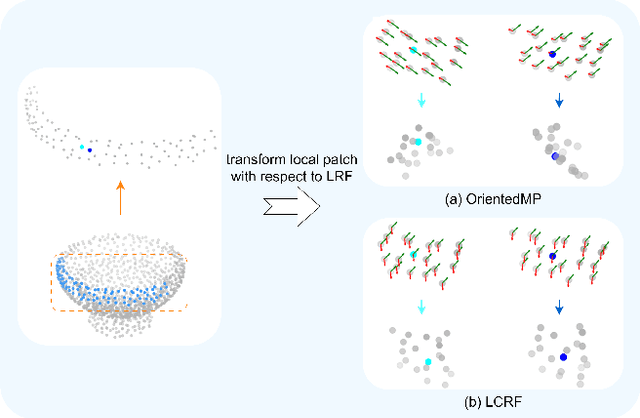
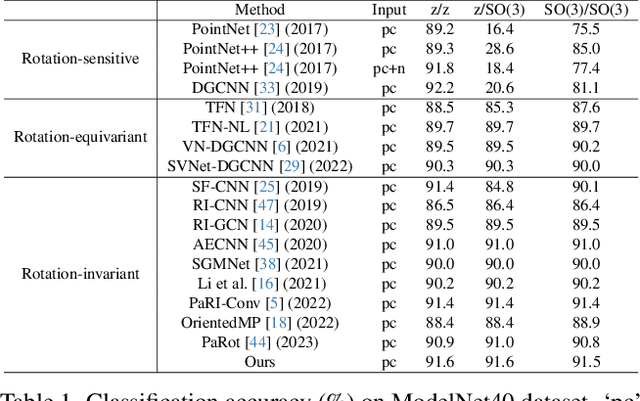
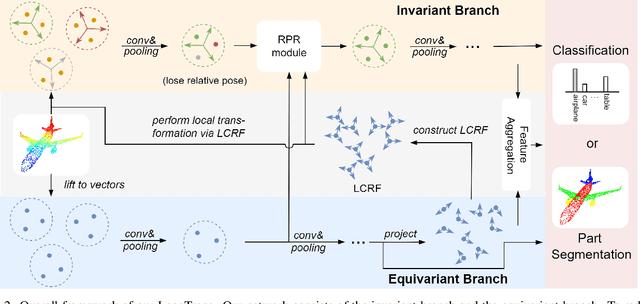
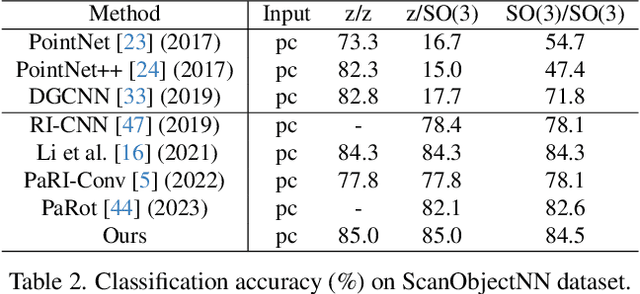
Abstract:Rotation invariance is an important requirement for point shape analysis. To achieve this, current state-of-the-art methods attempt to construct the local rotation-invariant representation through learning or defining the local reference frame (LRF). Although efficient, these LRF-based methods suffer from perturbation of local geometric relations, resulting in suboptimal local rotation invariance. To alleviate this issue, we propose a Local-consistent Transformation (LocoTrans) learning strategy. Specifically, we first construct the local-consistent reference frame (LCRF) by considering the symmetry of the two axes in LRF. In comparison with previous LRFs, our LCRF is able to preserve local geometric relationships better through performing local-consistent transformation. However, as the consistency only exists in local regions, the relative pose information is still lost in the intermediate layers of the network. We mitigate such a relative pose issue by developing a relative pose recovery (RPR) module. RPR aims to restore the relative pose between adjacent transformed patches. Equipped with LCRF and RPR, our LocoTrans is capable of learning local-consistent transformation and preserving local geometry, which benefits rotation invariance learning. Competitive performance under arbitrary rotations on both shape classification and part segmentation tasks and ablations can demonstrate the effectiveness of our method. Code will be available publicly at https://github.com/wdttt/LocoTrans.
When ControlNet Meets Inexplicit Masks: A Case Study of ControlNet on its Contour-following Ability
Mar 01, 2024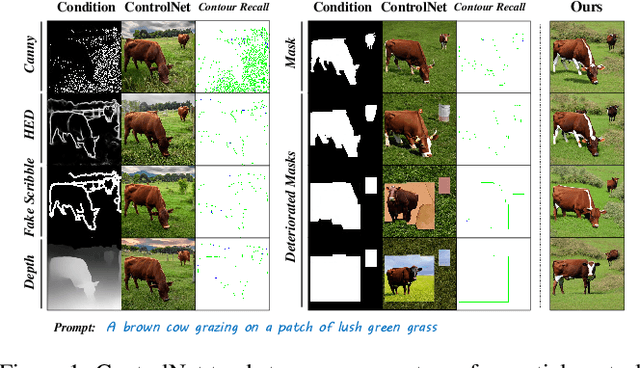
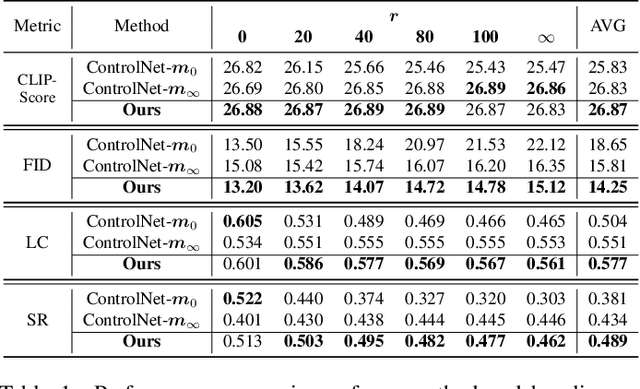
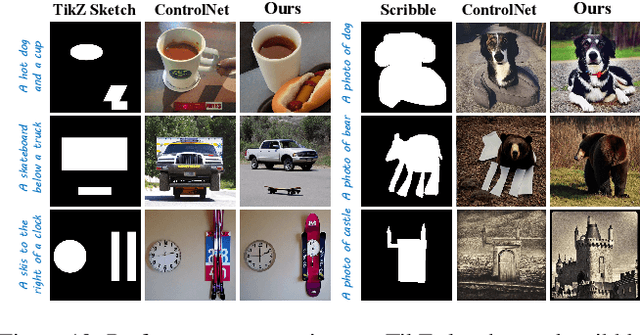

Abstract:ControlNet excels at creating content that closely matches precise contours in user-provided masks. However, when these masks contain noise, as a frequent occurrence with non-expert users, the output would include unwanted artifacts. This paper first highlights the crucial role of controlling the impact of these inexplicit masks with diverse deterioration levels through in-depth analysis. Subsequently, to enhance controllability with inexplicit masks, an advanced Shape-aware ControlNet consisting of a deterioration estimator and a shape-prior modulation block is devised. The deterioration estimator assesses the deterioration factor of the provided masks. Then this factor is utilized in the modulation block to adaptively modulate the model's contour-following ability, which helps it dismiss the noise part in the inexplicit masks. Extensive experiments prove its effectiveness in encouraging ControlNet to interpret inaccurate spatial conditions robustly rather than blindly following the given contours. We showcase application scenarios like modifying shape priors and composable shape-controllable generation. Codes are soon available.
ConDaFormer: Disassembled Transformer with Local Structure Enhancement for 3D Point Cloud Understanding
Dec 18, 2023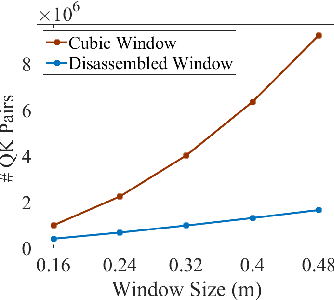
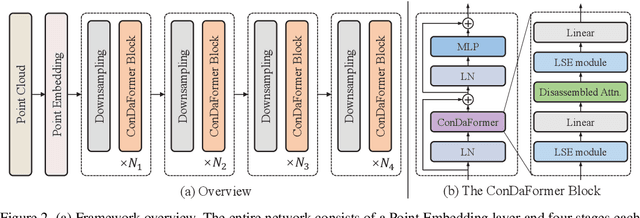
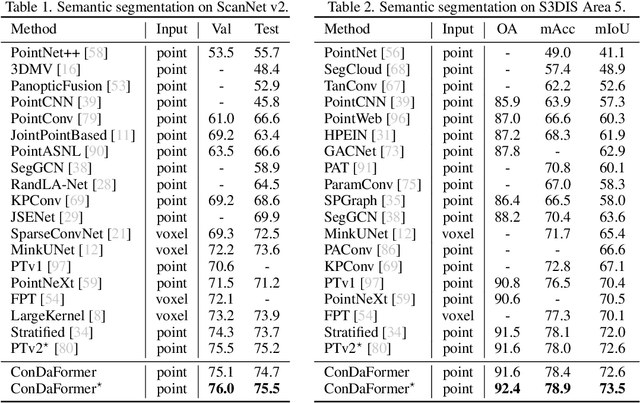

Abstract:Transformers have been recently explored for 3D point cloud understanding with impressive progress achieved. A large number of points, over 0.1 million, make the global self-attention infeasible for point cloud data. Thus, most methods propose to apply the transformer in a local region, e.g., spherical or cubic window. However, it still contains a large number of Query-Key pairs, which requires high computational costs. In addition, previous methods usually learn the query, key, and value using a linear projection without modeling the local 3D geometric structure. In this paper, we attempt to reduce the costs and model the local geometry prior by developing a new transformer block, named ConDaFormer. Technically, ConDaFormer disassembles the cubic window into three orthogonal 2D planes, leading to fewer points when modeling the attention in a similar range. The disassembling operation is beneficial to enlarging the range of attention without increasing the computational complexity, but ignores some contexts. To provide a remedy, we develop a local structure enhancement strategy that introduces a depth-wise convolution before and after the attention. This scheme can also capture the local geometric information. Taking advantage of these designs, ConDaFormer captures both long-range contextual information and local priors. The effectiveness is demonstrated by experimental results on several 3D point cloud understanding benchmarks. Code is available at https://github.com/LHDuan/ConDaFormer .
Optical Quantum Sensing for Agnostic Environments via Deep Learning
Nov 13, 2023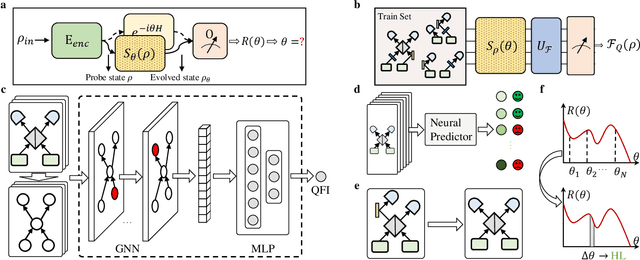
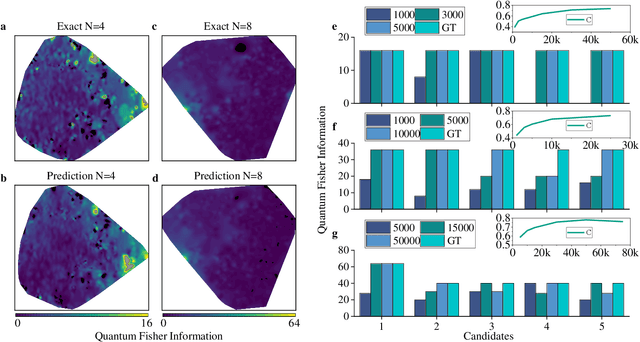
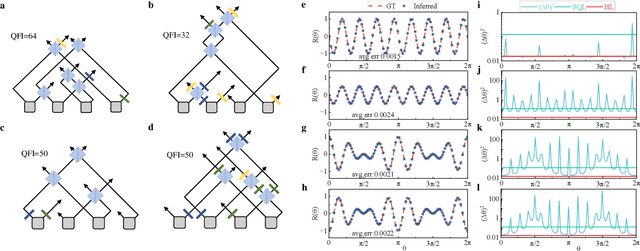
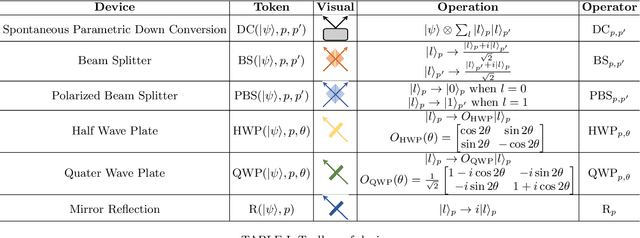
Abstract:Optical quantum sensing promises measurement precision beyond classical sensors termed the Heisenberg limit (HL). However, conventional methodologies often rely on prior knowledge of the target system to achieve HL, presenting challenges in practical applications. Addressing this limitation, we introduce an innovative Deep Learning-based Quantum Sensing scheme (DQS), enabling optical quantum sensors to attain HL in agnostic environments. DQS incorporates two essential components: a Graph Neural Network (GNN) predictor and a trigonometric interpolation algorithm. Operating within a data-driven paradigm, DQS utilizes the GNN predictor, trained on offline data, to unveil the intrinsic relationships between the optical setups employed in preparing the probe state and the resulting quantum Fisher information (QFI) after interaction with the agnostic environment. This distilled knowledge facilitates the identification of optimal optical setups associated with maximal QFI. Subsequently, DQS employs a trigonometric interpolation algorithm to recover the unknown parameter estimates for the identified optical setups. Extensive experiments are conducted to investigate the performance of DQS under different settings up to eight photons. Our findings not only offer a new lens through which to accelerate optical quantum sensing tasks but also catalyze future research integrating deep learning and quantum mechanics.
 Add to Chrome
Add to Chrome Add to Firefox
Add to Firefox Add to Edge
Add to Edge